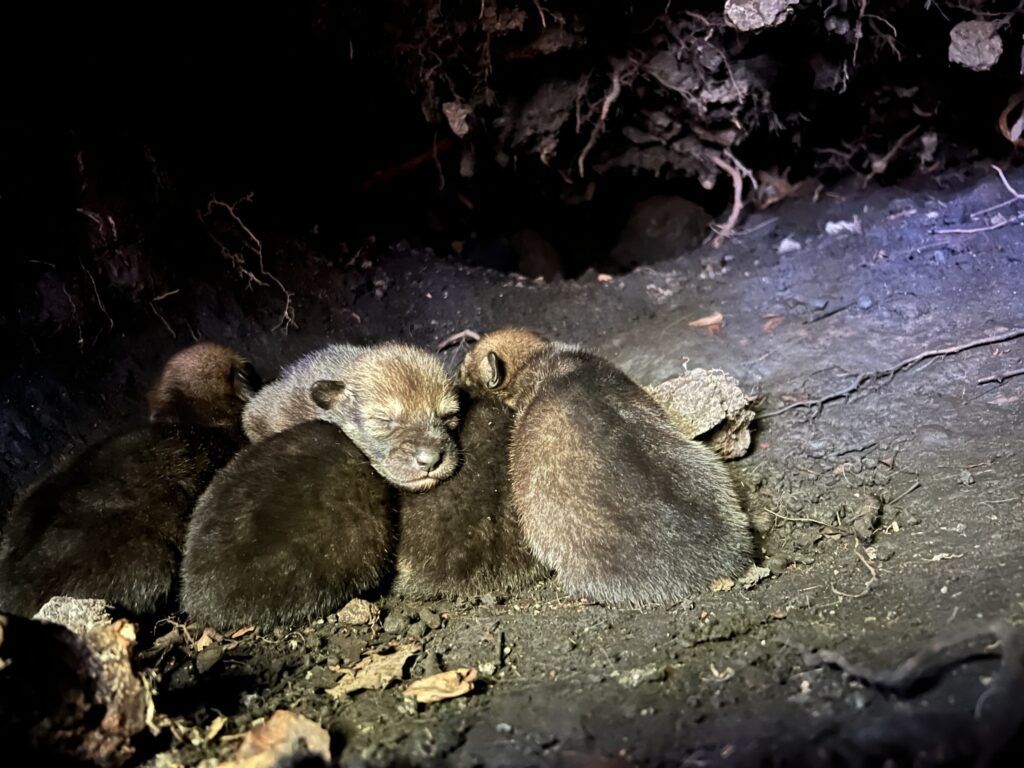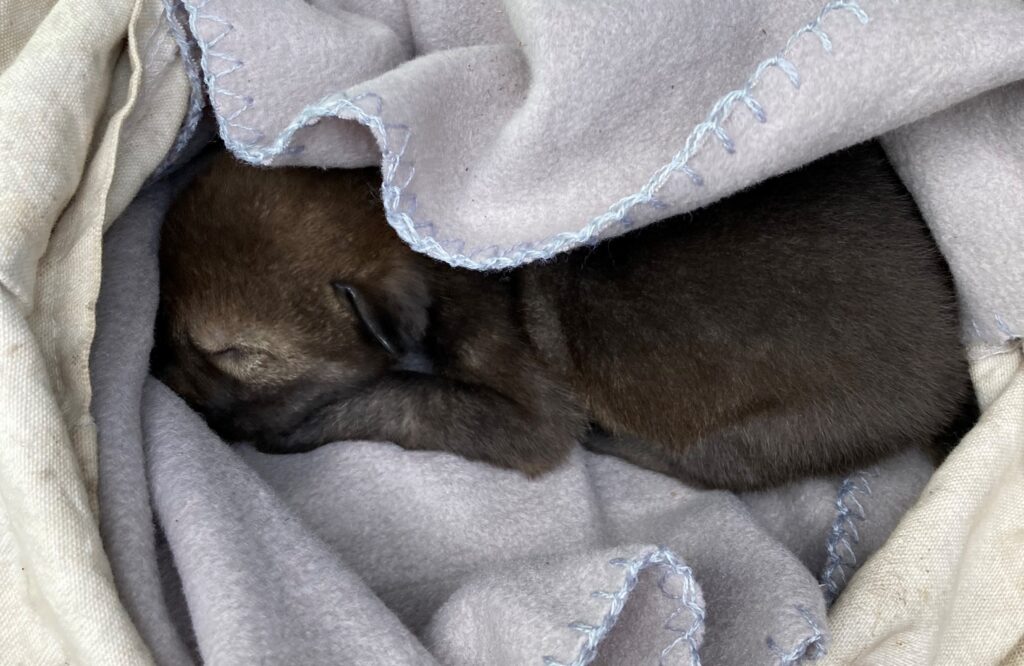At Point Defiance Zoo & Aquarium, it’s a big “howl yes!” for American red wolf conservation.
The Tacoma zoo has been a national leader in bringing this critically endangered species back from the brink of extinction since the 1970s. And decades later, 2023 has been one of the most successful years in the zoo’s history of working to recover this iconic American species.
Twelve healthy American red wolf pups were born this spring at the zoo’s off-site breeding facility in Eatonville. Adorable and growing fast, the pups are only part of the latest success in recovering the only wolf species found solely in the United States.
With golden eyes and a brown coat tinged rust-red to blend perfectly with long grasses, the 5-month-old pups are full of energy. The young wolves have learned to communicate by howls and look a lot like adults. And for these pups, a future spent running in the wild and meeting their own mates could be on the horizon.
These red wolves are cared for with as little human interaction as possible to prepare them for success in the wild. Over the summer, as the pups grew, with the help of 24/7 cameras, keepers observed the parents caring for them just as they would in the wild, said Curator Natalie Davis. Davis also serves as the studbook keeper for the Association of Zoos & Aquariums’ American Red Wolf Saving Animals From Extinction (SAFE) program.
With an estimated 20 red wolves remaining in the wild in eastern North Carolina, Point Defiance Zoo is doing everything possible to restore this critically endangered species, including recently fostering one of the newborn pups to the wild.
Fostering newborn pups
“Fostering is a technique in which captive-born pups, typically 10 to 14 days old, are placed in the dens of wild parents along with their similarly aged pups,” explained Davis. “The surrogate parents then raise the newcomers along with their own offspring.”
The fostered pups have the same survival rate as wild-born pups in their first year. “Fostering also helps to enhance the genetic diversity of the wild population,” said Davis.
Since 2002, 30 red wolf pups have been fostered from Species Survival Plan (SSP) or Saving Animals From Extinction (SAFE) facilities. That includes three pups born at Point Defiance Zoo in 2006; descendants of these fostered wolves still live in North Carolina today. And now, 17 years later, another red wolf pup born April 13, 2023, at the zoo’s off-site facility is thriving with his new family in the wild.
Davis and another staff biologist transported the 10-day-old pup from Washington to North Carolina. The morning after their arrival, he was placed in the den with his foster siblings (two brothers and three sisters) while the mother was hunting. Biologists with the U.S. Fish and Wildlife Service (USFWS) tracked the mother using radio telemetry until she returned to the den.
“We watched from miles away through binoculars as the mother returned to the den,” said Davis, smiling from ear to ear. “It was a career highlight to be a part of this and see real conservation in action.”
On June 7, during routine monitoring, all six pups were observed by USFWS officials, indicating the pup was successfully adopted by the wild red wolf mother.
Releasing adult red wolves into the wild
In 2023, six adult red wolves from SAFE facilities were released into the wild. One of the wolves was born at Point Defiance Zoo’s off-site facility in 2016. He was moved to the Endangered Wolf Center in Missouri in 2021 on a breeding recommendation. In spring 2022, his mate birthed a pup, and by the fall, the family of three moved to an acclimation pen in North Carolina. In spring 2023, the pair had four more pups, and the family was also released into the wild.
“Pups are vital to the future of this critically endangered species,” said Davis. “We hope they can thrive in the wild for many years.”
Another wolf born in 2020 at the zoo’s same off-site facility was also released this spring.
“He was transferred to North Carolina last fall and placed in an acclimation pen,” explained Davis. “A female from the wild joined him in the spring, and then in May, biologists released the pair into the wild.”
Unfortunately, USFWS announced in June that a captive-born male released into the wild this spring was found dead with a shot wound in the torso.
“As disappointing as this outcome is, the fact that his howl rang through the wilds of his native range, even for a short time, fills me with immense pride in our contribution to this program,” said Davis.
That is just one example of the reintroduction program’s challenges in recovering the species.
Red wolves once ranged from New York to Texas, but by the late 1960s to 1970s, very few red wolves were left in the wild. Excessive hunting, humans moving into their territory, and other animals forced the population to fall to zero. In 1967, USFWS listed red wolves as critically endangered under the federal Endangered Species Preservation Act (now the Endangered Species Act).
In the 1980s, Point Defiance Zoo and the USFWS established a zoo-based breeding program with 14 wolves from the wild to restore the population. Today, about 20 red wolves are in the wild, and over 270 are in human care. Four wolves live at Point Defiance Zoo, and 51 live at the zoo’s off-site breeding facility.
Davis says despite the setbacks, they are on a positive trajectory.
“We’re working closely with our red wolf partners to restore this population, and I’m very hopeful that red wolves will be roaming the South again,” said Davis.
Dental checks
In early October, back at Point Defiance Zoo’s off-site facility in Eatonville, Wash., a team of veterinarians and keepers gave dental checks to many of the elder wolves, whose teeth wear over time.
“The American red wolf is the most critically endangered wolf in the entire world,” said Davis. “It’s imperative that we ensure any red wolves under our care are kept as healthy as possible to benefit their overall recovery plan.”
On the exam tables were wolves like wolf 2077, the father of one of the males released to the wild this spring. He’s also the grandfather of that adorable litter of six pups born at the facility in April. His entire lineage serves the same meaningful purpose: they are the future of this incredible species.

